The seventies for Americans was a time of bad fashion, odd fads, and disco dance music, but there was much more to the time period than that. Historians have increasingly portrayed the 1970s as a “pivot of change” focusing especially on the economic outbreaks following the end of the postwar economic boom. As the 1960s came to an end, the rapid development of the American postwar decades took a significant toll on the environment, and the public called for action. In November 1971, the newly created Environmental Protection Agency announced a massive photo documentary project, called DOCUMERICA, to record the unfavorable effects of modern life on the environment.
Roses Are Red
Taken in Staten Island, New York in 1973, this photo captures the pristine appearance of these white houses down a street in Great Kills Park.

Almost like the houses in Stepford, the lawns on these front gardens are trimmed to perfection while some are also home to neatly trimmed bushes, white statues, and splashes of red roses. Otherwise known as the “forgotten borough,” Staten Island has many negative stigmas attached to it. However, it is clear during the 1970s these were less precise.
Day Becomes Night
In 1971, the EPA launched Documerica, a project to capture images of environmental problems, EPA activities, and everyday life in America. Freelance photographers captured more than 15,000 photos of the heightened air and water crises of that time.

Taken in North Birmingham, Alabama in July 1972, neighbors from this quiet street got together to watch day become night when the industrial smog became so heavy. Sitting adjacent to the U.S. pipe plant, this is the most heavily polluted area of the city.
Overcrowded Signs
This 1972 photo really captivates that Las Vegas is the city of bright lights and signs. The beautiful scenic view of mountains is almost disguised by the countless mostly red, eye-captivating signs down the street.

Being ranked as one of the world’s most visited tourist destinations, as well as being extremely densely populated, even during the ’70s, it is no wonder why so many hotels, motels, and apartments were advertising their services. These motorists have unlimited options of where to go for a quick catnap.
Taking Off
Ladies of the 1970s were all about flared high-waisted trousers, funky patterns, and hippie power, and these women display exactly that.
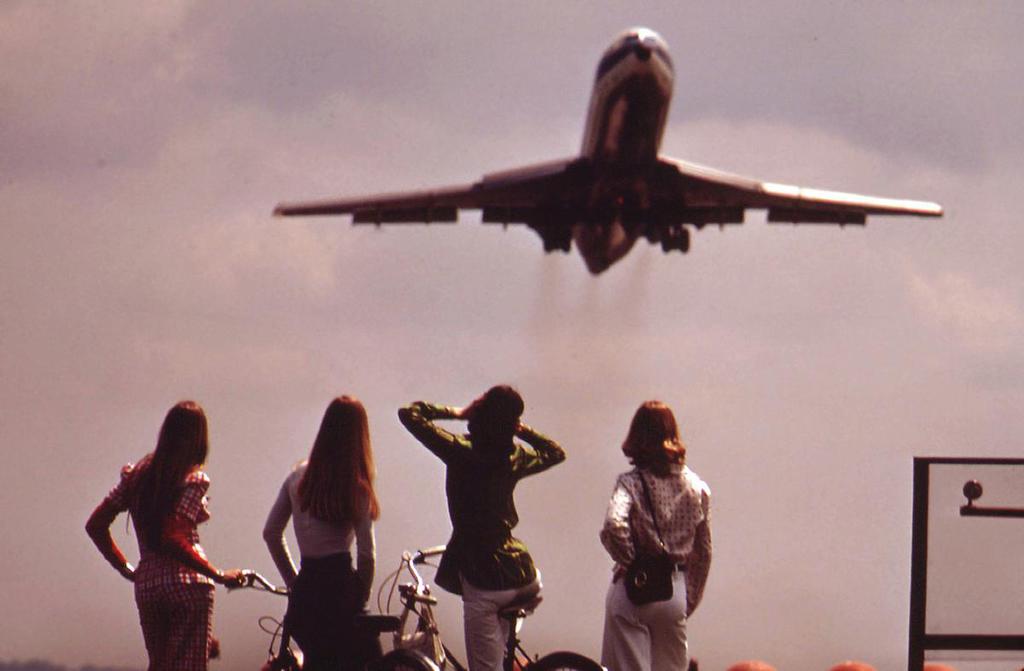
As the jet takes off from National Airport in Washington, District of Columbia in May 1973, one of the four ladies covers her ears against the roar of the engine. While being fascinated with the large advanced vehicle taking to the sky, these ladies remain basic with their environmentally-friendly two-wheeled bicycles as they take a trip around the city.
Riding Solo
This is Associate County Court Judge Fred Burns on his daily bike ride to the Seward County Courthouse in Nebraska in May of 1972. While most judges remain understated, Burns’ plaid suit with large white tie sets precedent for the 1970s fashion.

Traveling solo on his bicycle down this empty road you can almost hear the silence and tranquility of this early morning commute. While being a great role model and encouraging a cleaner environment by replacing his car with a bike, someone should let him know even judges should wear helmets!
The Sundancer
This super experimental electric car was an exhibit at the first symposium on low-pollution power systems development. The conference was held at the Marriott Motor Inn, Ann Arbor, Michigan in October 1973.
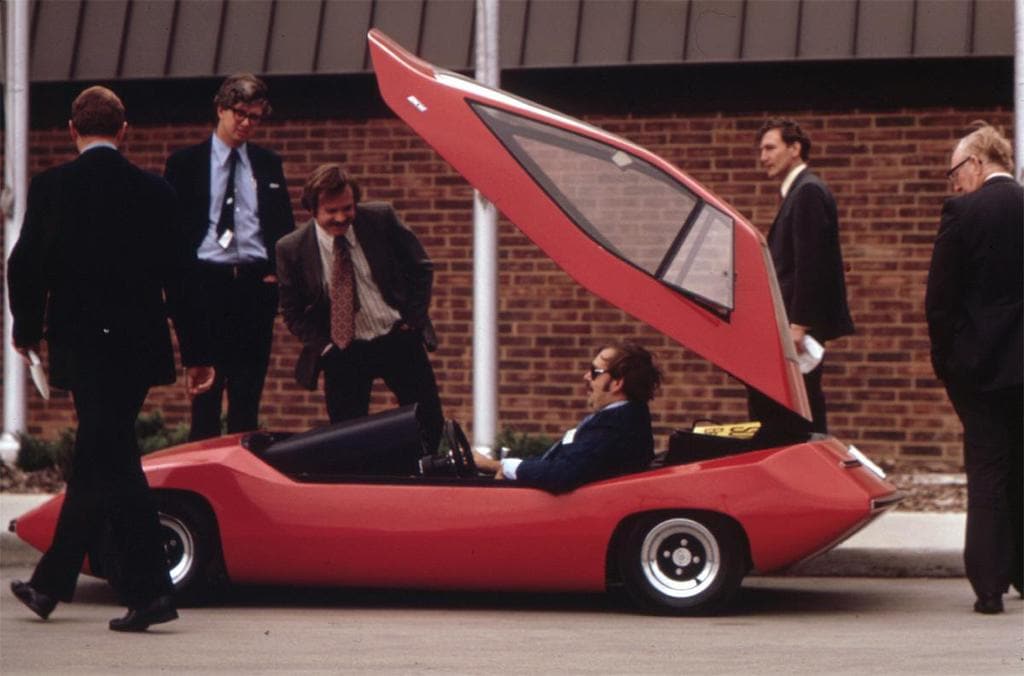
Many vehicles and hardware were assembled at the EPA Ann Arbor Laboratory and this photo shows some participants looking over the ESB “Sundancer.” The Sundancer combined the kit-car look and fighter-jet style canopy that was popular around this time. The compact two-seater was built by race-car constructor Bob McKee and operated an eight-horsepower electric motor and a dozen six-volt batteries.
Keeping Up Appearances
During a time of climate change and pollution, this mom would go out onto her New York terrace daily to make sure her flowers continued to blossom.
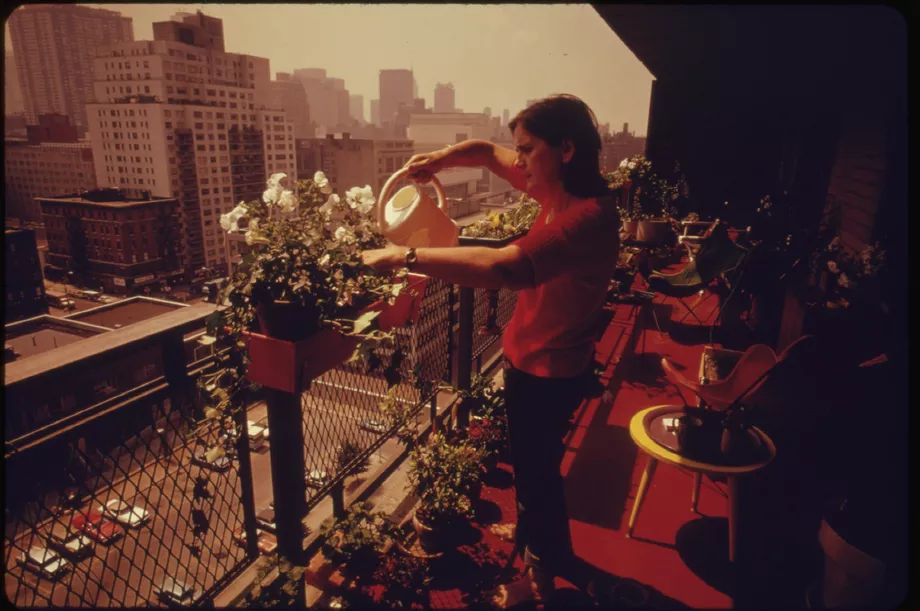
While she watered her pots of flowers, she would overlook the scenic city views and peer at the tall skyscrapers ahead. This family lived at 170 West End Avenue, Manhattan, a normal New York apartment which was rather cozy for many families, yet affordable. This mom was keen to make the most of what space she had.
Car Inspection
This young woman watched while her car underwent testing at an auto-emission inspection station in Downtown Cincinnati, Ohio in September 1975.
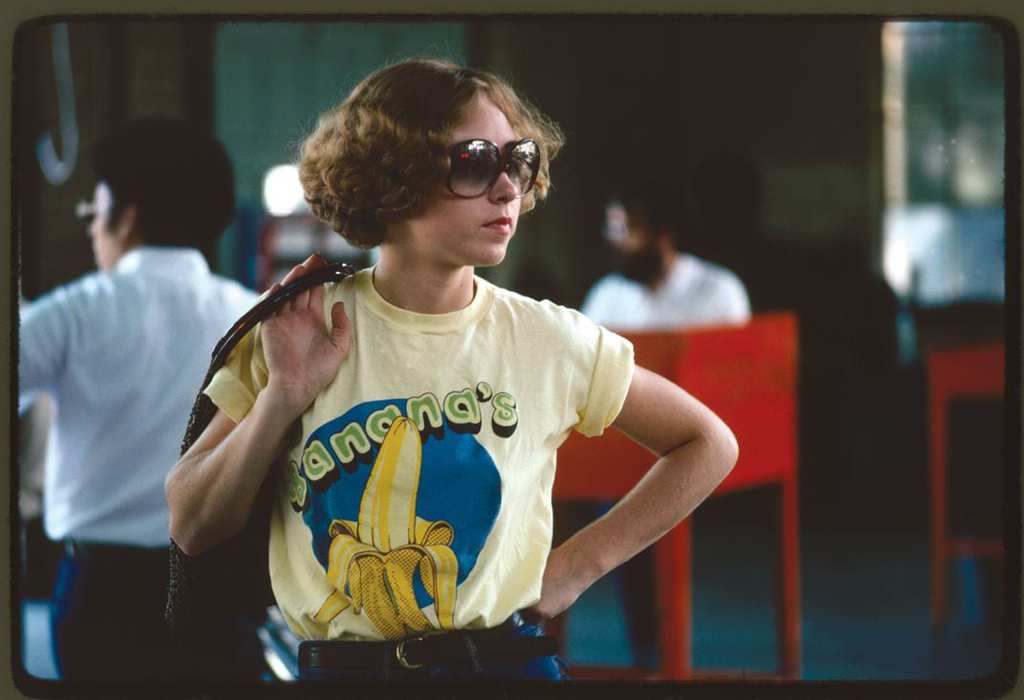
All light duty, spark ignition-powered motor vehicles were to be tested annually for carbon monoxide and hydrocarbon emissions and given a safety check. During this year, emission tests on exhaust analyzers began as a way of reducing pollution and environmental problems. While watching over, this car owner rocked a vintage retro tee, very popular at the time.
Retire In Miami
The South Beach area of Miami is a haven for the elderly, and being home to many inexpensive retirement homes, who can blame them? These happy ladies even get to enjoy trips away with other residents to cheap, but low-star, hotels where they can put their feet up.
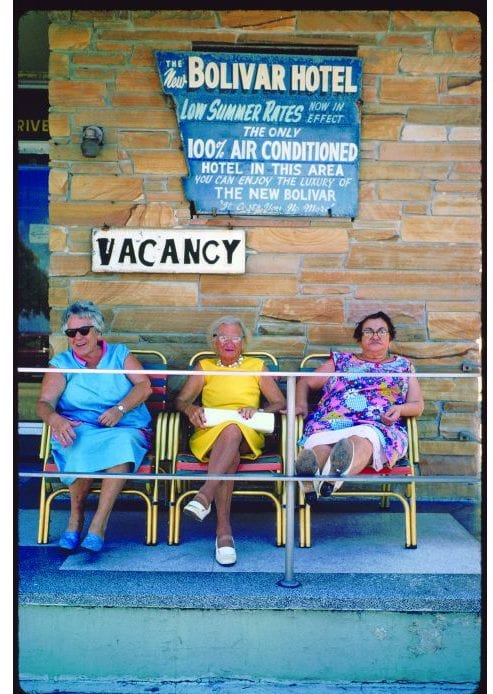
There is no better place for these ladies than a front porch where they can sit and have a chat about the good old days or watch activities on the beach.
Plans In The Pipeline
While this picture taken from 1974 tends to be used as a scenic background for the quote, “Life is like a road trip – enjoy the ride and don’t take too much luggage,” this picture actually has a lot more meaning behind it.

This is an east view along Alaska’s Glen Highway. Between the two vehicles, there is a pair of wooden stakes along the right shoulder at Mile 673, marking the point where a 48-inch diameter pipeline will cross the roadway. Towards Mount Drum at the intersection of the highway was the under-construction Trans-Alaska Pipeline.
No Place Like Home
For this family, this painted bus is home. These parents decided to ‘go green’ – literally – and paint their funky home on wheels a bright green.
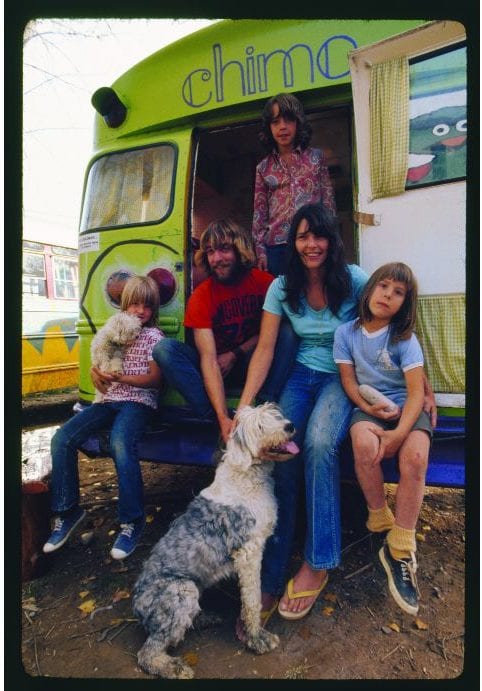
They weren’t the only ones, as during the mid-1970s the custom van craze really hit its stride. Vans got larger in the 1970s, with more interior volume, allowing for things like beds and couches that were almost the same size as those you’d fit in your home. The customized vans were seen at music festivals and suddenly became cool.
Kosciusko Public Swimming Pool
The pool was built in the 1970s as a place for neighborhood kids to keep cool in the New York summer, meet friends, and mess around. The original caption to this photo snapped in 1974 read, “Some of the best American architecture survives in the ‘worst’ neighborhoods.”

The Kosciusko Public Swimming Pool is in the heart of Bedford-Stuyvesant district of Brooklyn, a less-privileged area. However, the brownstone buildings in the background which looked simply burned out at the time are most likely worth millions now.
Boom In Wisconsin Tourism
Near the town of Wisconsin Dells is the Wisconsin River. This river channels through deep, soft sandstone cliffs and cuts rock into interesting shapes. The fascinating rocks led to an increase in tourism to Wisconsin.

People were coming in flocks and crowds, usually in campers and trailers. This restaurant selling a random mixture of pancakes, pizza, spaghetti, and sandwiches began to compete with other shops, bars, and boat trip shops in the complex, which extended 2 or 3 miles beyond the town.
Quilt Making
These ladies are the senior citizen members of the Fairmont Golden Circle club. In the picture, they are carefully modeling a precious quilt they made during their time at the club. Given their expressions, they are clearly very proud of their work.

In the background is a century-old frame house, the oldest building in the Fairmont town. It was originally a school, but in 1973 when this photo was taken, it was a private residence. The quilt was raffled off during the Fairmont centennial in May.
Chicago Blues
This young couple looks almost like 1970s fashion icons as they stand on Michigan Avenue, Chicago.

Rocking a perfectly groomed afro and a blue tux with flared trousers, the man could be one of the brothers from Jackson 5, while his lovely wife is styling a cute mini dress with oversized hat and matching white accessories. A popular place for jazz and home to notable blues artists such as Muddy Waters, this fancy couple is heading out for a night of Chicago blues.
Oil Crisis
This gas station in Portland, Oregon is captured here with a “closed” sign in front of it. 1973 saw a huge gasoline shortage. This was due to an oil restriction from the members of the Organization of Arab Petroleum Exporting Countries.

The embargo was targeted at nations perceived as supporting Israel during the 1973 Arab-Israeli War and included the United States. By the end of the embargo in March 1974, the price of oil had risen from $3 USD per barrel to nearly $12 globally; US prices were much higher.
Giant Slide
Here the photographer has captured a group of kids climbing through a broken fence and riding the abandoned giant slide at Coney Island in March 1973. This slide marks the decline of the area’s recreational use at a place that was once known as Steeplechase.

This amusement park was the longest-lasting park in New York and was home to the famous Parachute Jump. The Giant Slide was operated for only a few years by longtime Coney Island concessionaires the Garto brothers.
Hitchhiker And His Dog
Shoeless and only with his dog, Tripper, in hand, John attempted to hitchhike on the U.S. 66 which crosses the Colorado River at Topock.
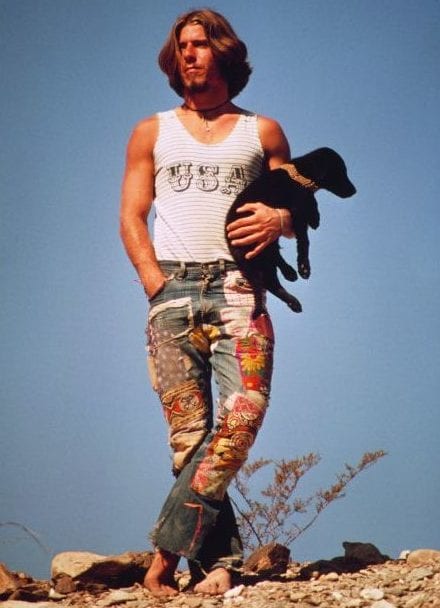
This was a popular means of transport during the hippie era as a way of the youth escaping where they had come from and meeting the real people of America. Sporting his USA tank top and patterned patch jeans, John attempted to make his way to California to join like-minded free spirited people.
The Howards
Mr. and Mrs. Berry Howard of Cumberland, Kentucky are pictured here leaning against their new truck. The elderly couple managed to invest in the truck using some of his black lung payments.

Mr. Howard was an old miner who retired several years before this moment, but his black lung disease was a result of the coal dust particles filling air sacs in his lungs, creating a progressive shortness of breath. This was an incurable illness which plagued miners in the 1970s.
Uptown Funk
Brothers, Spencer and Tommy, are captured here playing outside in their home in Uptown, Chicago, Illinois, a neighborhood of poor white southerners.

Taken in August of 1974, this was an area that became highly attractive to poor southern migrants and impoverished Native Americans in the 1950s. Illinois created halfway houses among the old and rundown apartment complexes for the mentally ill who were making their way back into society. Uptown gained its reputation as “Hillbilly Heaven.” This was almost true for Spencer and Tommy, whose mom could not afford to live anywhere else.
Dome Car
Jacquie and Barbara were among many other ladies who wanted to watch the scenery unfold as they went aboard the dome car on the Amtrak train.

Passengers were able to view the beautiful landscapes of Arizona and New Mexico as the Southwest Limited made its way between Los Angeles, California, and Albuquerque, New Mexico. Jacquie and Barbara were captured here in 1974 taking a scenic route through Arizona chatting about what used to be there and, of course, their grandchildren.
A Bit Of A Jam
In 1974, cars were jammed even more than usual into every spare space in this downtown commercial parking lot in Washington, DC. During a bus strike in May, around 250,000 people were forced to find alternative forms of transportation.

The crazy monumental traffic jams resulted in drivers leaving their cars in car parks like these, realizing that there were more cars than legal places to park. It will take more than a Tetris wizard to get the cars out of this puzzle.
Changing The Environment
This image captured by Documerica shows a cyclist in front of the Environmental Center in 1972. The photo demonstrates how ordinary people like the ones in this photo were instrumental in creating environmental improvements that started in 1970.

The people were facing terrible effects from decades of pollution and demanded action through protests and public engagement. They started the first Earth Day on April 22, 1970, which created many environmental laws that remain today. Shelly, pictured on the bicycle with two friends, was among the many protestors hoping for a better life.
Damaged Water
Mary Workman from Steubenville, Ohio has a job to transport clean water from a well many miles away. She would not sell her part of the land to the coal company, Hanna Coal Company, even though they own almost all the land around her and have closed many roads, making it difficult for her to sell.
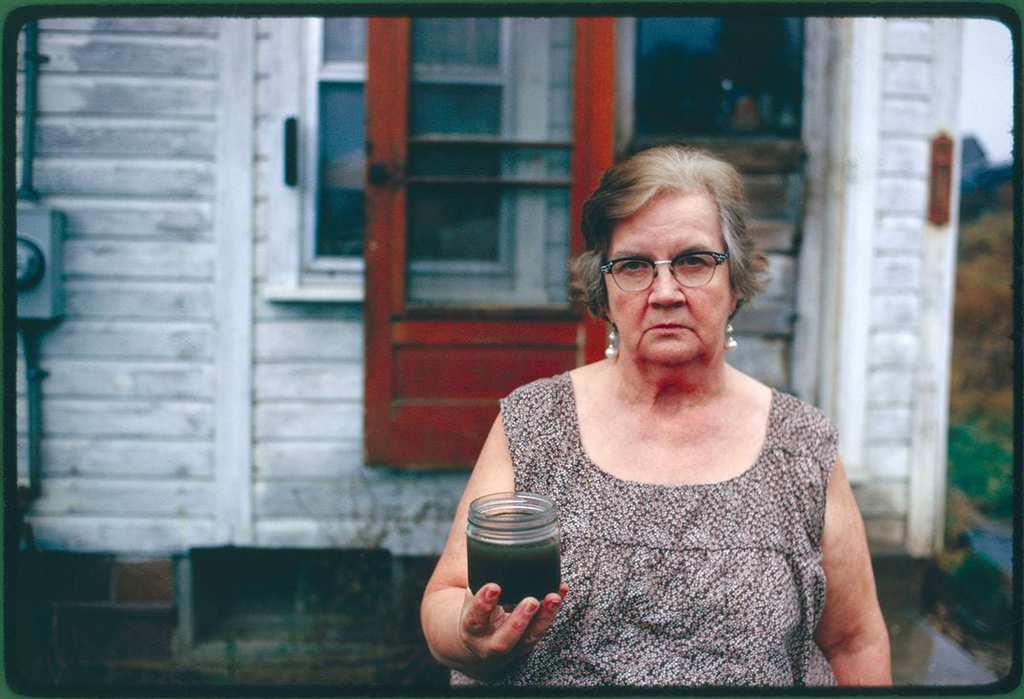
She is captured here holding a jar of undrinkable water from her well, damaged by the company, and she has filed a damage suit against them. During the 1970s there was a continuing battle between coal companies and local residents.
Latin America
Taken in Brooklyn, New York in 1974, two Latin girls pose in front of a graffiti wall in Lynch Park. Maria and Nicole are part of a project to portray the inner-city environment.

The project contains life, great murals on walls of buildings, and people enjoying themselves. Interlocking arms, these girls are great friends who enjoy their lifestyle. Living in Brooklyn among African-Americans, Latins, and poor whites, the inner city environment was a fun place for young people to live.